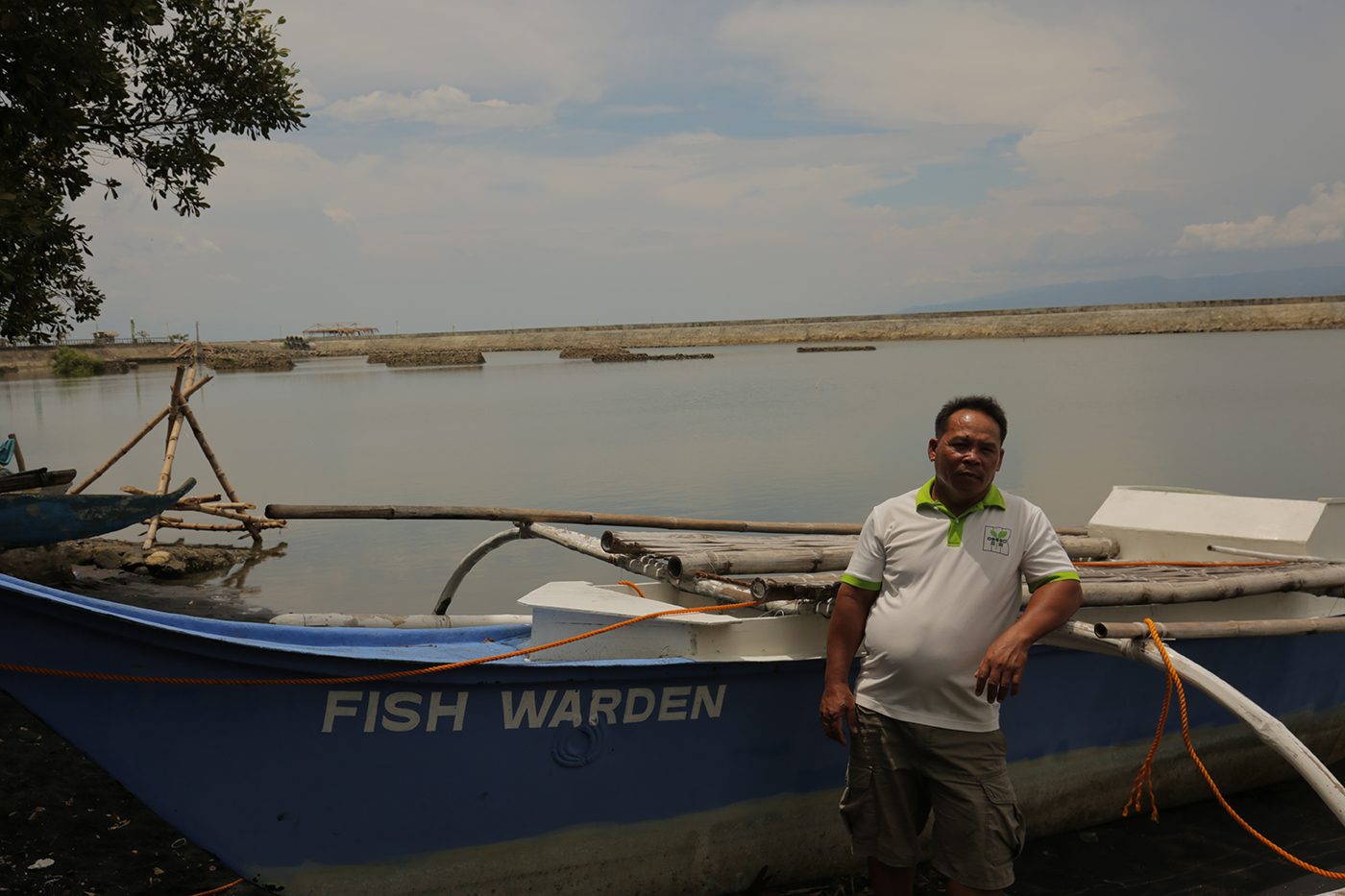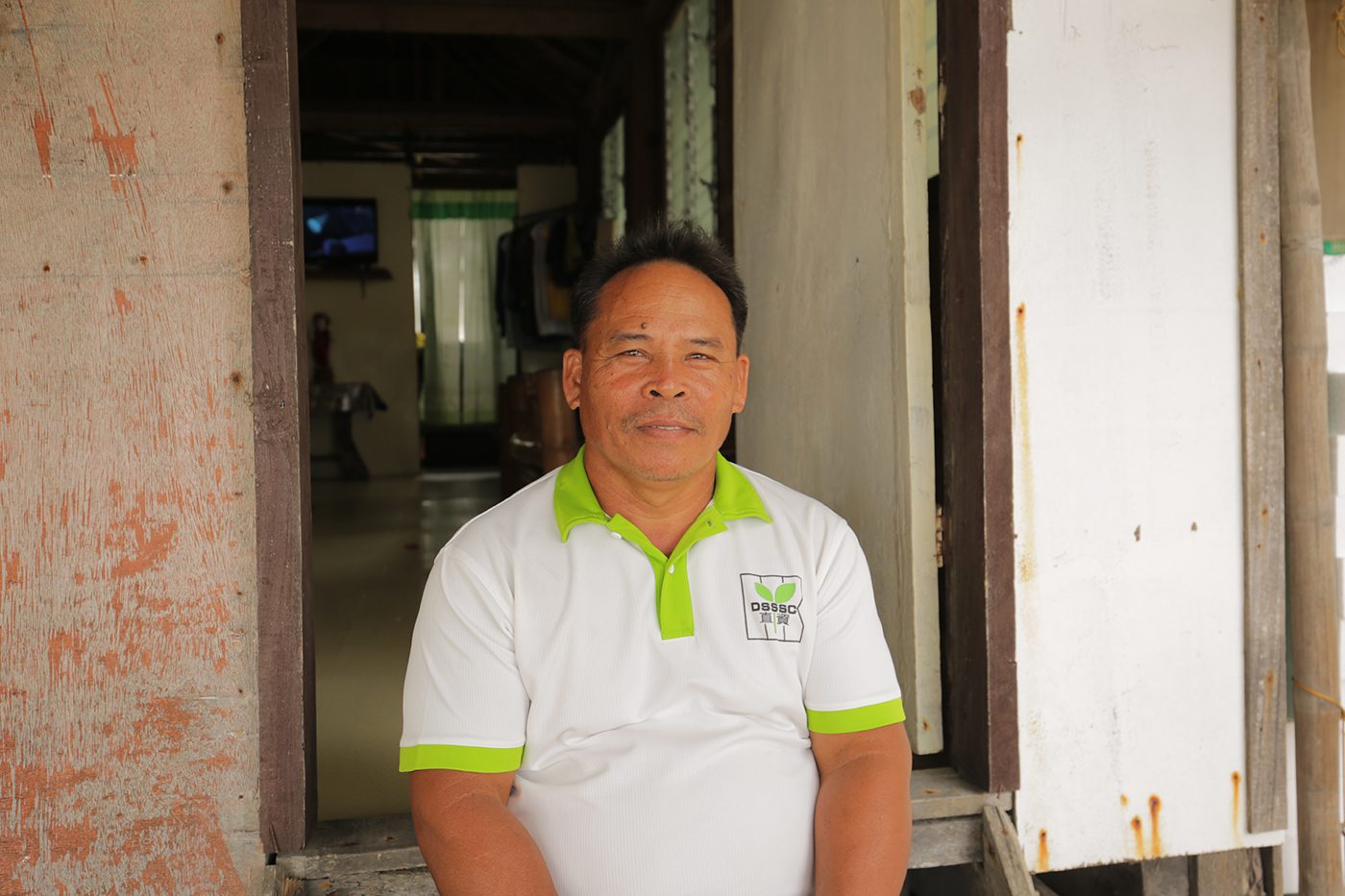SUMMARY
This is AI generated summarization, which may have errors. For context, always refer to the full article.

NEGROS ORIENTAL, Philippines – To stop destructive and illegal fishing practices, involve someone who actually knows how to fish.
At least that’s the view that Ybarra Laruga of Tanjay, Negros Oriental, holds, and he’s been involved in the campaign to enforce fisheries laws in the Visayas for more than 22 years.
On the day of his interview, Laruga was pleased that he had caught 10 kilos of goatfish (timbongan) and island mackerel (anduhaw) the night before, and made nearly P2,000. His friends had each caught 6 to 10 kilos as well. They didn’t have to head too far from shore. “We used less than half a liter of fuel,” Laruga said.
What made that bounty possible was a batch of artificial reefs that his association had put in place in 2018. The contraptions look simple – just a few bamboo poles tied together in the shape of a makeshift pyramid and covered with palm fronds. Laruga and his neighbors placed these about 10 to 12 meters underwater (not too deep or the currents would be too strong), weighed each structure down with a small block of cement, and waited a few months.
“Now, we can find plenty of fish near our artificial reefs,” Laruga explained.
This year, the Tanjay Fishermen’s Village Association has received 1,200 bamboo poles that they plan to divide among 9 coastal barangays. Beyond a four-hectare marine reserve in Pulo, there is far too little coral cover left in Tanjay, said Laruga, which is why their catch has dwindled in recent years.
And so, he and his allies build artificial reefs and work with Bantay Dagat to try to stop commercial and municipal fishermen whose methods endanger what little coral cover and seagrasses are left.
Each day, if the weather favors him, Laruga goes out to fish at 4 in the morning and stays out for about 4 hours. The rest of the day, he divides between his work at the city government and his association duties. Most of his days are long and tiring, but his livelihood has allowed him to support his oldest son throughout college and send his daughter to a private school.
“Before, when I went to school, I never had shoes. I used net bags to carry my things. Since we didn’t have money for a tricycle ride, we walked to school. Sometimes, I had to carry one of my younger siblings,” Laruga said. “But now my children are college-educated.”
‘Life is better now’
His son, now 32, works as a firefighter in Cebu province. His daughter, a business administration major, has one more year of college to complete. Their education is a point of pride for Laruga, who made it to high school but chose to fish full-time after that so he could help support 6 younger siblings.
Education remains out of reach for 1 in 4 families in Negros Oriental. In January to June 2018, the government’s statistics office reported that 26% of the province’s families made less than P7,400 a month. The numbers were an improvement from those in 2015, when 40.6% of the province’s families fell below the poverty threshold. In both years, poverty incidence in Negros Oriental was higher than the national average.
“But life is better now,” Laruga said.
His optimism stemmed, in part, from the reelection earlier that week of Tanjay City Mayor Reynaldo Concepcion, who hired him in 2016 as a job-order employee of the fisheries office. Laruga first joined the local government in 2001 and had the chance to contribute to the coastal resource management plan during the two terms he had a job. But after a new administration took over in 2007, he lost his job and would not apply again until 3 terms had passed.
In the Philippines, overfishing, destruction of coral reefs, and sedimentation often come up as the reasons behind the challenges in the fisheries sector. Yet part of what makes fisheries so vulnerable is that whatever gains are made in coastal law enforcement and resource management can be set back when the local political leadership changes.
For now, though, Laruga is hopeful that local officials appreciate the need to involve fishermen’s associations in Bantay Dagat and coastal resource management programs. He was 32 when he first got involved in Bantay Dagat, 35 when his association was organized, and 36 when he first had a chance to contribute to the local coastal resource management plan. When Oceana invited him to join an alliance of other fishermen’s representatives from Tañon Strait’s surrounding communities, he was 52.
He is now 54 and busier than ever.

Support from connections
Visible from his front porch, where he sorts out his nets every day, is a blue outrigger boat with “Fish Warden” painted in white near its prow. The association received it last March 2018. In the same year, they received P296,000 worth of nets from the social welfare agency’s sustainable livelihood project. As soon as the bamboo artificial reefs are done, they plan to build a hatchery with support from the Bureau of Fisheries and Aquatic Resources and the Tanjay city government. A large fishpond sprawls behind Laruga’s unfenced yard but it belongs to someone else.
The election season hadn’t yet cooled down in May 2019 when Laruga had to prepare for a week-long assessment of Tanjay’s marine resources by the environment department. Without any hesitation, he rattled off the names of all 9 coastal barangays that would be covered. He has lived in Tanjay all his life.
“In grade school, I would hop on the banca with my father after classes to help him fish. We could catch 10 to 20 kilos of large mackerel without going too far from the shore. By the time I was in high school, I could carry the large net by myself,” Laruga recalled. “I saw how rich Tañon Strait was. I thought I would make more money as a fisherman.”
In the 1970s, dynamite fishing was rampant in Tanjay. “There was no Bantay Dagat yet, and most civilians didn’t want to help because they were afraid of what might happen to them. But my fellow fishermen and I decided to help the police and soldiers go after illegal fishers.”
As early as 1996, the University of the Philippines Marine Science Institute warned that only 4.3% of the country’s coral reefs were still in excellent condition. In that state, coral reefs can produce up to 20 tons of fish per square kilometer, per year. Yet at that time, about 30.5% of the country’s reefs were already in poor condition.
Dynamite fishing is a lot less common now in Tanjay, but Laruga reported that some commercial fishermen continue to encroach on Tañon Strait, which is so narrow that practically all of it is municipal water where commercial fishermen are supposed to be banned.
“Some commercial fishers are supported by politicians,” Laruga pointed out, “but we just have to keep on patrolling.” Some fishermen use fine mesh nets in violation of a Tanjay ordinance and drag these through the water, a method that’s supposed to be prohibited in the protected Tañon seascape.
“I make it a point to explain the law to those we intercept during Bantay Dagat operations,” said Laruga. “I want them to see that many of us are determined to protect Tañon Strait.”
Balancing the demands of production, protection, and law enforcement is difficult, but what drives Laruga, apart from the need to support his family, is his memory of a time of abundance. “When I was little, my father would carry me to his boat and we would go fish together. There was so much fish. There are some types of fish that you can find now only in deep water, maybe 100 meters or so deep. But we used to see these fish in water just 3 to 4 meters deep.”
Nearly 70 years ago, Laruga’s maternal grandfather moved the whole family from Carmen in Northern Cebu to Negros Oriental, where a job in a fish pond awaited. His mother grew up and got married in Tanjay. Her husband’s family had come from Bohol but were mostly fisherfolks too, and he supported the family by fishing.
“We have always depended on fishing,” Laruga said. “I know the sea well and don’t need GPS to find my way around. I’ve depended on it to raise my family.” – Rappler.com
Read more from this series:
- Seaweed sends 11 children of Bantayan couple to school
- Bantay Dagat official sees work as high-risk, high-reward
- Ranger, researcher, relentless learner: Meet Joy Hekrdle
- Tourism helps Negros Occidental fishermen ease pressure on Tañon Strait
Add a comment
How does this make you feel?
There are no comments yet. Add your comment to start the conversation.